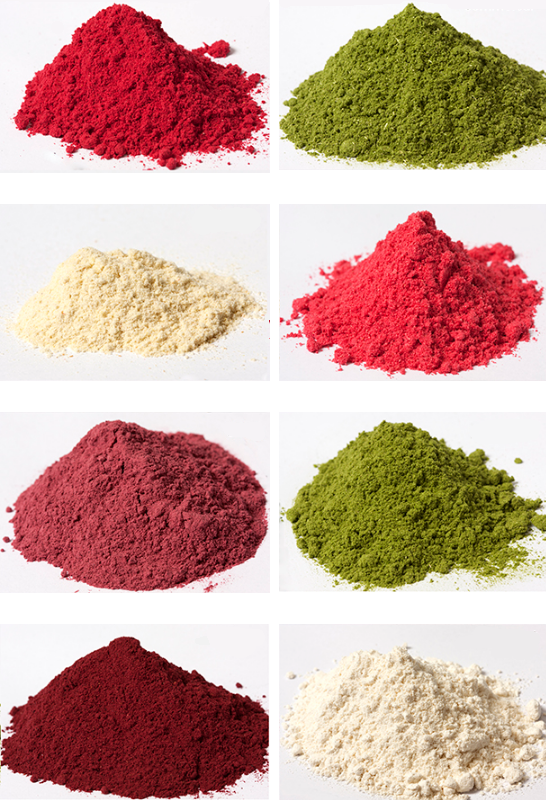MAFFRA
MAFFRA
- Antibacterial plants against diarrhea in pig herds
Gastro-intestinal infections in pigs reduce the welfare of the animals, increase the mortality and pose a serious problem both in organic and conventional pig production.
Large amounts of antibiotics, zinc and copper are used for the treatment and prevention of diarrhea and infections in conventional pig production, and to some extent also in organic production. Most of this is used for weaning piglets.
A high consumption of antibiotics can cause problems due to the development of multi resistant pathogens that are dangerous to humans. The increasing use of zinc and copper also poses a problem to the environment, because these metals are spread with the slurry and will be accumulated in the farm land.
Hence, there is a need for alternative solutions. The use of plants with antibacterial effects as supplementary feeding for piglets might reduce intestinal infections that lead to diarrhea.
Purpose of the project
The MAFFRA project will investigate the possibility of developing new multi-component, plant-based remedies against gastro-intestinal problems in pigs.
The purpose of the project is to examine whether plants with documented antibacterial effects can reduce the growth of pathogenic bacteria like E.Coli, Clostridium, Salmonella, Campylobacter and Listeria in a gastro-intestinal model. The focus of the project is to develop an antibacterial feed additive as replacement for antibiotics, zinc and copper.
The selected mixtures will be tested in the laboratory in a pig stomach-gut model that mimics the environment in the gut in order to examine the ability of the mixtures to inhibit the pathogenic intestinal bacteria. The aim is not necessarily to kill the bacteria, but to achieve a healthy balance in the gut flora.
By mixing selected plant species with differing antibacterial mechanisms, the researchers expect to achieve an antibacterial cocktail effect that will make it more difficult for the bacteria to develop resistance.
MAFFRA runs in the period 2016-2018.
Findings
Twelve plant species with previously known activity against pig gut pathogens, primarily E. coli, were identified as the most promising candidates and plant material was procured from new cultivated plant trials or from gene bank material located at AU FOOD.
Yield was evaluated as harvested from field and during processing into freeze-dried powders. Chemical compounds with potential to contribute to antibacterial activity was analyzed using HPLC, GC, spectrophotometry, titration, pH. A number of chemical compounds that varied in type and concentration between species, i.e. allicin, terpenes, acids, phenolics, flavonoids were quantified. In vitro results demonstrated that crude powders of ramsons and acidic berries where the most potent species against E. coli and this refers to the content of allicin in ramsons and total acidity and low pH of berries and rhubarb. With the exception of ramsons, the concentration of the antibacterial compounds were so low in the crude powders that a dose of around 5 % powder by weight was needed to obtain significant reductions of bacteria growth in the intestinal model.
In vitro lab test
The in vitro lab test used an incubation model, where digesta from the stomach and small intestine from dead piglets where mixed with pathogenic E. coli (F4 or F18 strains) and with different concentrations and combinations of plant powders. After 4 hours incubation at 38 C E. coli bacteria were plated, cultivated and inhibition or growth evaluated.
In the small intestine digesta model, concentrations of 5 % added by weight showed that ramsons had a strong bactericidal effect (100 times reduction), redcurrant, lingonberries and clove had a bacteriostatic effect and mustard and rhubarb partly inhibited growth. Horseradish, sage, savory and oregano showed no or only insignificant growth inhibition at 5 %. Mixtures of ramsons (0.5%) and lingonberries (0.5%), or ramsons (0.5%) and redcurrant (0.5%) showed bacteriostatic effects.
In the stomach digesta model, 5% redcurrant and lingonberries each reduced E. coli concentration approx. 10.000 times, probably due to the pH being lowered below 4. Ramsons and clove reduced 1000 times and this was not due to pH lowering. Mustard and rhubarb reduced E. coli 100 times, whereas horseradish, oregano, savory and sage showed no effects on survival of the E. coli strains. Ramsons added at 1% still showed strong bactericidal effects, whereas all other species (at 1%) showed no inhibition. Combinations of 1 % ramson and 1% lingonberry significantly improved the antibacterial activity as compared to 1 % ramsons alone and thus showed synergistic interaction, likely associated with a pH sensitive effect of ramsons (allicin). Similar mix with the acidic red currant or rhubarb also showed this interaction. Allicin from ramson bulbs and acidity from berries were concluded to show the dominant antibacterial activity in this project. Preliminary tests with Clostridium perfringens tested in ABS lab media showed inhibiting effects of 1% powder addition of sage, summer savory and lingonberry and to less degree by oregano. Ramsons was also observed to show some inhibition, but further studies are needed to verify this.
In vivo pilot study
A minor pilot in vivo study was performed using 5 weeks old post-weaning conventional pigs that were fed with standard feed supplemented either with or without a mixture of ramsons and lingonberries (3% + 3%, by weight) for two weeks. Concentration of overall E. coli was determined in feces during the trial and showed an up to 100 times reduction of E. coli after 7 and 14 days, in piglets fed with plant cocktail. After 14 days, pigs were killed and E. coli quantified in stomach, small intestine, cecum and colon.
In all GI tract segments, E. coli was significantly lower in pigs fed the plant cocktail, pointing to a strong potential to reduce E. coli and thus potentially reduce post-weaning diarrhea. The concentration of Lactobacillus was not affected, which is positive. A lower pH was found only in the stomach. The trial also demonstrated that the pigs ate the food with the plant cocktail without any sign of dislike of taste or reduction of feed intake. All the results taken together are very promising, but still needs full-scale in vivo verification over longer time and test in controlled ‘challenge trials’ with added pathogens to finally prove that the plant cocktails can be a commercial solution to control post weaning diarrhea in pigs.
Conclusions and recommendations
The dried plant powders are well adapted to use directly as a feed additive in pig feed, but more knowledge on stability of antibacterial activity in feed mixes and under standard farm storage conditions are needed. The cost of ramsons and lingonberries presently makes these non-economically to use as feed additives, but alternatives like garlic (three times higher content of allicin) and industrial acidic berries or leftover pomace from juice production may show to be more economically sustainable, but need to be documented.
The new plant cocktail concept, when fully proven, will provide a future tool for improving and maintaining gut health in organic pigs and conventional pigs produced without antibiotics, and reduce the need for antibiotics, zinc and copper and reduce the risk of developing antibiotic resistant bacteria.
Project leader
Martin Jensen,
AU-Årslev, Department of Food Science,
Aarhus University
E-mail: Martin.Jensen@food.au.dk
Phone: +45 8715 8331

